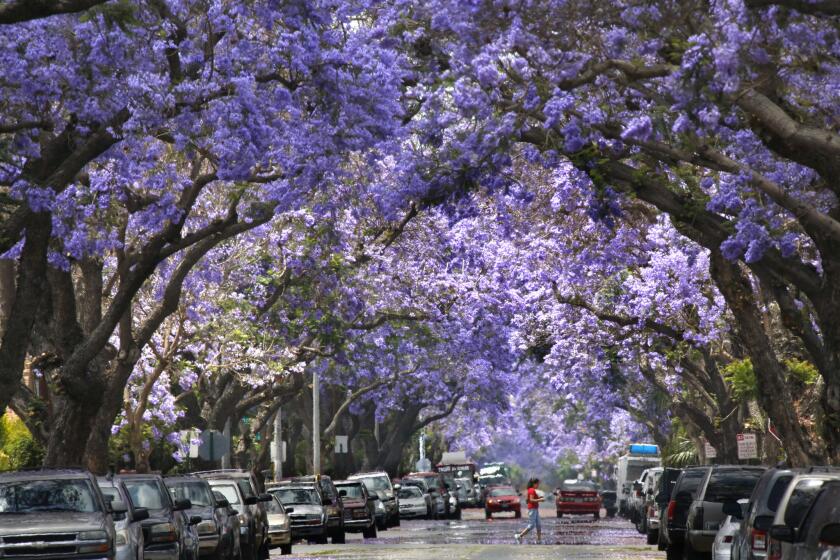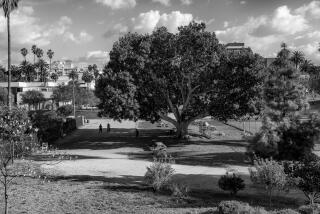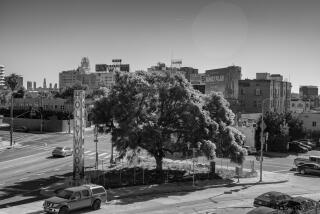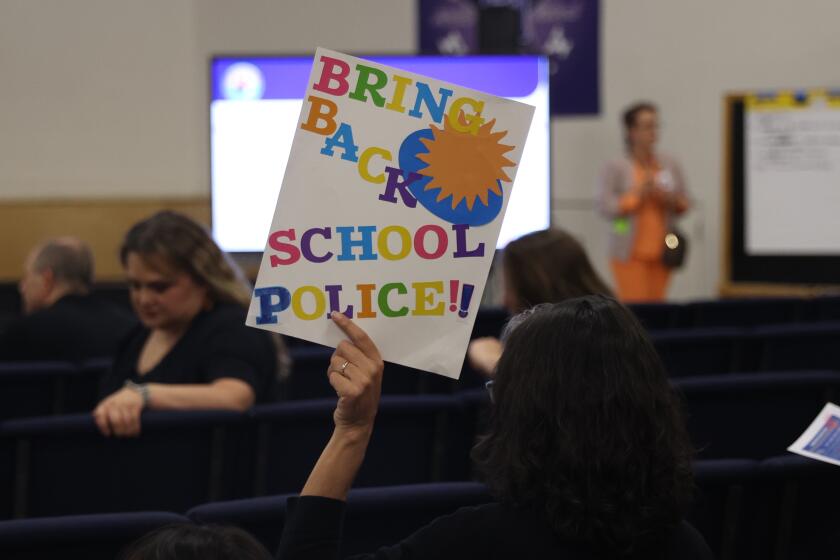Column: Why I hate jacarandas
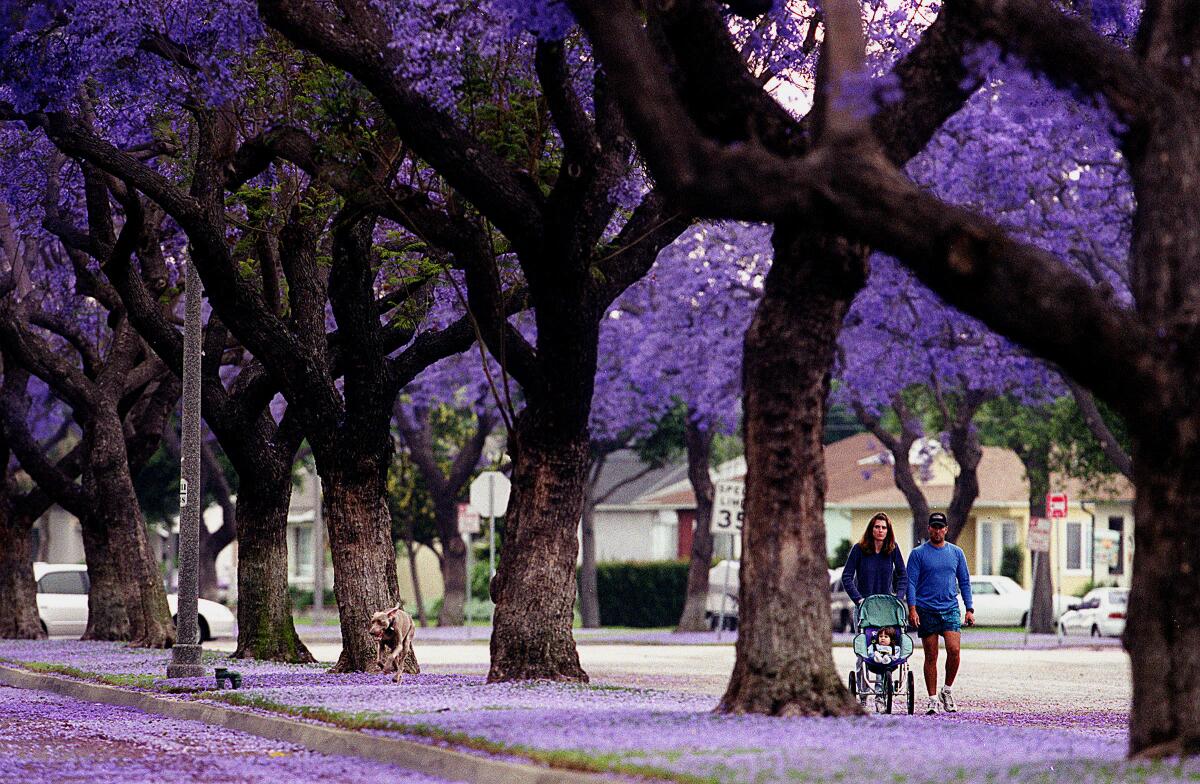
I met my first jacaranda tree in the spring of 1989. My parents had recently moved us from a granny flat in a rough part of Anaheim to a three-bedroom, two-bath, one-swimming pool American dream in a better part of town.
With a frontyard of their own, my parents did what any good Mexicans would do: They planted colorful flowers and trees. Vibrant roses, flashy birds of paradise. A massive bougainvillea that doubled as a thorny fence to make sure cholos didn’t climb over from the apartments next to us. Orange, lemon and mandarin trees that continue to bear fruit all these decades later.
When the jacarandas bloomed, that initial burst of color — tiny, bright flowers seemingly as numerous as the stars — prettied the neighborhood like nothing I had ever seen. One tree towered over the house next door. Another was across the street. More were down the street near the house where my cousins would soon move. For a couple of days, it seemed as if our block floated in a purple cloud.
The dream ended once the blossoms began to drop.
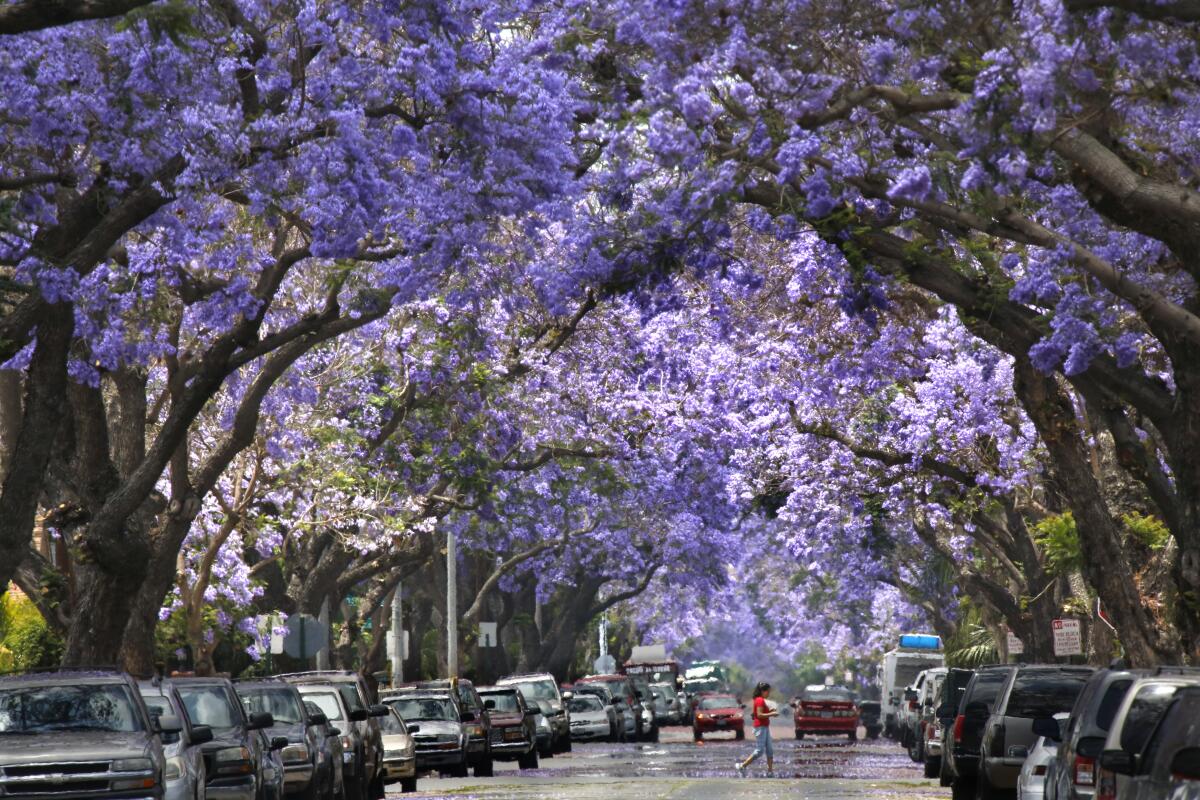
One petal became four, became a mess. I grabbed one and squeezed it onto my tongue. The milky goo that squirted out stank like the alley next to our old shack and tasted like vinegar-laced glue. The violet downpour caked our family cars, which meant my dad had to wash them almost daily. The floors my mom tried to keep immaculate were no match for the purple-flecked streaks of sludge we brought with our shoes.
I’ve been a proud jacaranda hater for the last 33 years.
The tree stands for California at its worst: all flash, no substance, a pain left for others to clean up, inspiration for a thousand delusions and a million excuses.
Our family rejoiced when the city workers removed the one next door to our house a decade ago. My animus toward jacarandas is such that a couple of years ago, when my dad called me to say that a thunderstorm had split apart a tree that crushed the side of my 1979 Ford Supercab, I asked if that meant another neighborhood pest was finally toppled. My disappointment when Dad told me it was another tree was real.
It wasn’t until a couple of years ago that I discovered some people actually like jacarandas. That many Southern California residents think the South American native is a beautiful addition to our landscape instead of Satan’s bouquet. That lovers of the species range from newcomers to long-timers to legends such as Vladimir Nabokov and Eve Babitz. Raymond Chandler wrote, “Beautiful hands are as rare as jacaranda trees in bloom, in a city where pretty faces are as common as runs in dollar stockings.”
Betcha he didn’t live on a jacaranda-lined street.
The jacaranda is a striking but polarizing piece of the Southern California streetscape.
Jacarandas don’t deserve to be mentioned in the same breath as Southern California’s other iconic, non-native trees that we’ve transformed into metaphors for who we are. Citrus established our reputation as a subtropical paradise and also sowed the seeds of political activism for Mexican Americans who tired of toiling in orchards. You can turn eucalyptus leaves into all sorts of tinctures and remedies. Loquats are every bit as messy as jacarandas but are at least edible and delicious — same with figs. Ficus trees and their sidewalk-breaking roots offer copious shade. Palm trees transport you to the beach or the desert.
The only place jacarandas take you is to a dustpan, a broom or a scraper.
Defenders say that jacarandas are ephemeral, our version of Japan’s cherry blossoms. Houseflies have short lives, too, but I don’t see people wax poetic about them. They’ll claim that the hue of jacaranda flowers doesn’t occur much in nature. Well, come to my house and I’ll give you cuttings from my lavender plant, which is prettier, more drought-tolerant and smells far better. Jacarandas are a pretty reminder of springtime? So is opening day at Dodger Stadium.
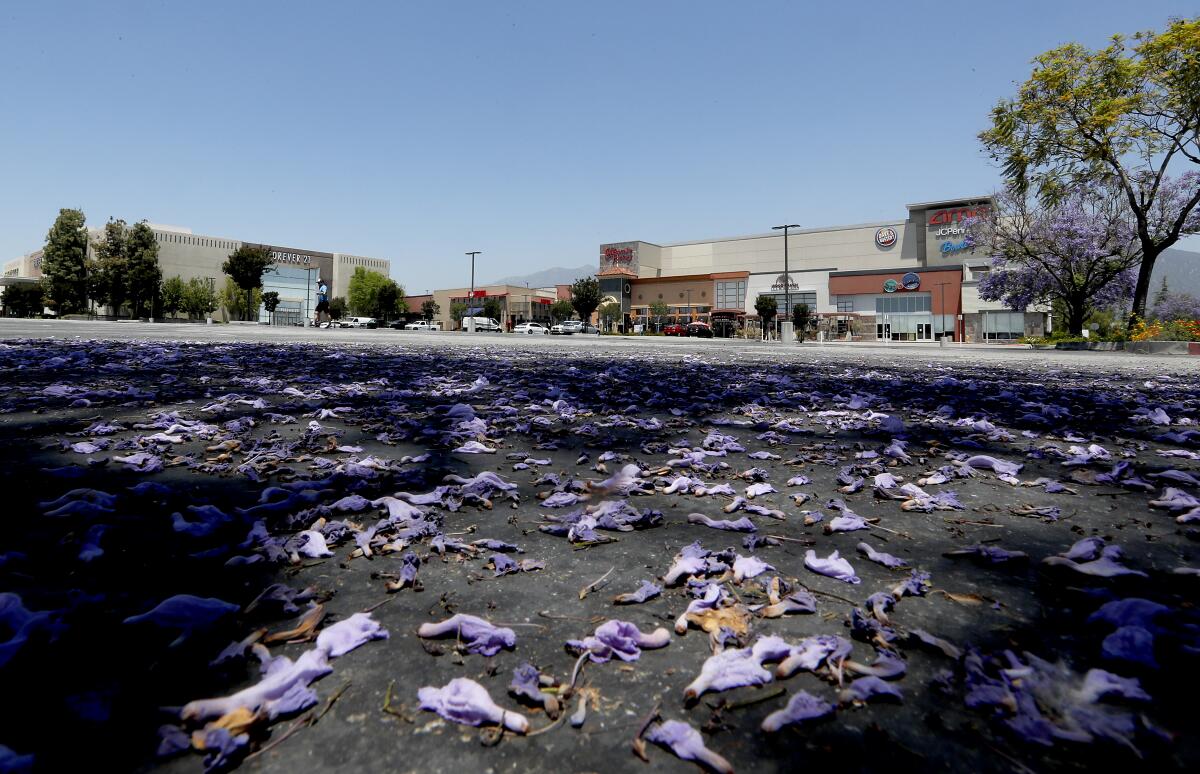
Jacarandas are the In-N-Out of plants — overrated, but with a fan base bordering on the cultish. And they’re more popular than ever, dammit!
A character in the recent Disney animated smash “Encanto” sings about being able to create a “hurricane of jacarandas” as one of her talents. GIFs exist of the trees swaying, or just the phrase “Happy Jacaranda” shimmering in purple. Instagram offers a stream of photos of blossoms this time of year, even as those who live near them grumble and scrub.
“Messy!” said Osvaldo Beltrán. The 58-year-old was walking down Garnsey Street heading toward Edinger Avenue in Santa Ana, which the city recently highlighted in a newsletter for its jacarandas. An accompanying photo showed about two dozen trees standing on each side of the street, canopies touching, bright petals on the road and in the sky, stretching to the horizon.
The picture didn’t show what Beltrán and I saw. Asphalt tinted a sickly, sticky brown in rings around cars. Residents flicking off the flowers from their lawns and driveways. Piles of faded vegetation ready to get swept up, like a decayed Barney the Dinosaur.
“You have to clean up after them almost as soon as they fall down,” Beltrán said in Spanish. “Otherwise, they can damage the paint job on your car.”
I asked if he thought they were pretty.
“Yeah,” he replied, “but not everything that’s pretty is good for you.”
More to Read
Start your day right
Sign up for Essential California for news, features and recommendations from the L.A. Times and beyond in your inbox six days a week.
You may occasionally receive promotional content from the Los Angeles Times.
